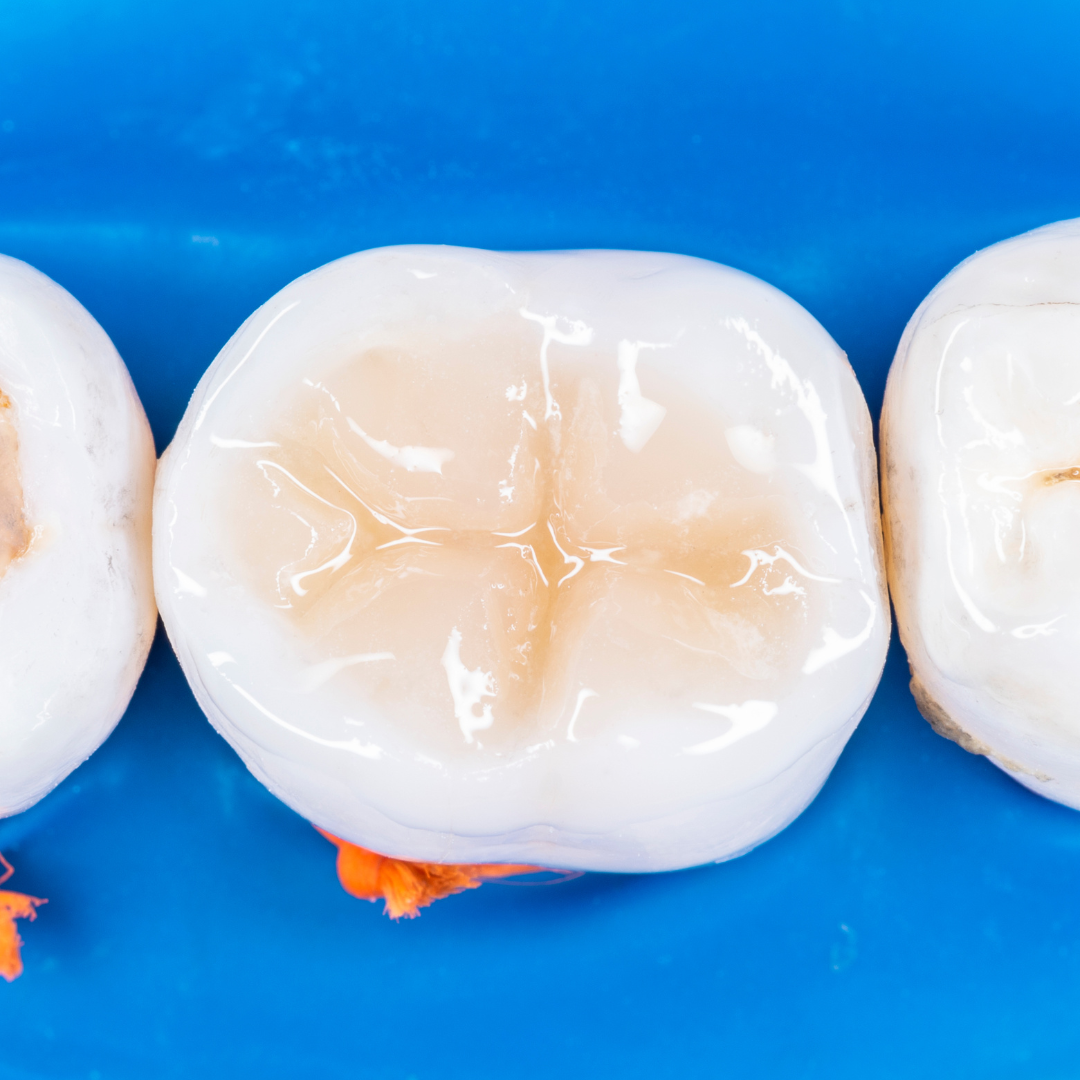Restorative dentistry
Advanced Solutions for Tooth Decay: Inlays, Onlays, and Overlays
When patients visit our office with tooth decay, they often expect that a composite filling is the best solution for every situation. While composite fillings offer many great benefits and blend seamlessly with natural teeth, they might not always be the best option for larger cavities due to their mechanical properties.
For cases involving significant tooth decay, a composite filling might not provide the durability required. Instead of opting for a crown or risking a large composite filling that could lead to further breakdown of the tooth, we recommend ceramic restorations such as inlays, onlays, or overlays. These options provide superior strength and longevity while preserving more of your natural tooth structure.
Inlays, Onlays, and Overlays: Understanding the Differences
Inlays: An inlay is used when the decay or damage is confined to the area between the cusps of the tooth. It fits within the grooves of the tooth and is bonded in place. Inlays offer a durable and aesthetic solution for moderate decay.
Onlays: Onlays are used when the damage extends beyond one or more cusps of the tooth. They cover a larger area than inlays and provide additional support to the tooth structure. Onlays are a great alternative to crowns when more coverage is needed without removing a significant portion of the natural tooth.
Overlays: Overlays, also known as partial crowns, cover the entire biting surface of the tooth, including one or more cusps. They are ideal for extensive decay or damage that affects a large portion of the tooth, providing maximum strength and protection.
Why Choose Ceramic Restorations?
- Durability: Ceramic inlays, onlays, and overlays offer superior strength compared to direct composite fillings, making them ideal for restoring larger cavities.
- Aesthetic Appeal: These restorations are custom-made to match the color and appearance of your natural teeth, ensuring a seamless blend.
- Preservation of Tooth Structure: Unlike full crowns, inlays, onlays, and overlays require minimal removal of healthy tooth structure, maintaining the integrity of your natural tooth.
- Long-Lasting Results: Ceramic restorations are designed to withstand the forces of chewing and last for many years with proper care.
Our Process
- Examination and Assessment: During your visit, we conduct a thorough examination and use advanced imaging techniques to assess the extent of tooth decay.
- Personalized Treatment Plan: Based on our findings, we determine the most suitable restorative option—whether it’s an inlay, onlay, or overlay.
- CAD/CAM Technology: Each restoration is digitally designed and milled to precisely fit your tooth.
- Cementation: The final step is the cementation of the restoration to your tooth, providing a secure and durable result.
Composite Fillings
When and Why Indicated: Composite fillings are ideal for treating small to medium cavities and minor tooth damage. They are a preferred choice for their aesthetic qualities and conservative approach.
Schedule your appointment now to discover how our restorative dentistry treatments can preserve and enhance the health of your teeth.



